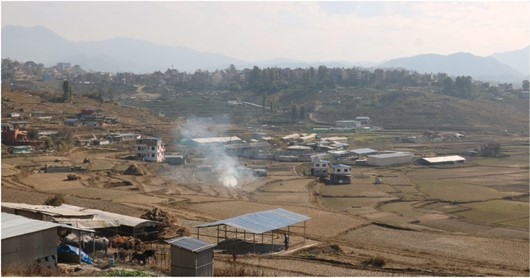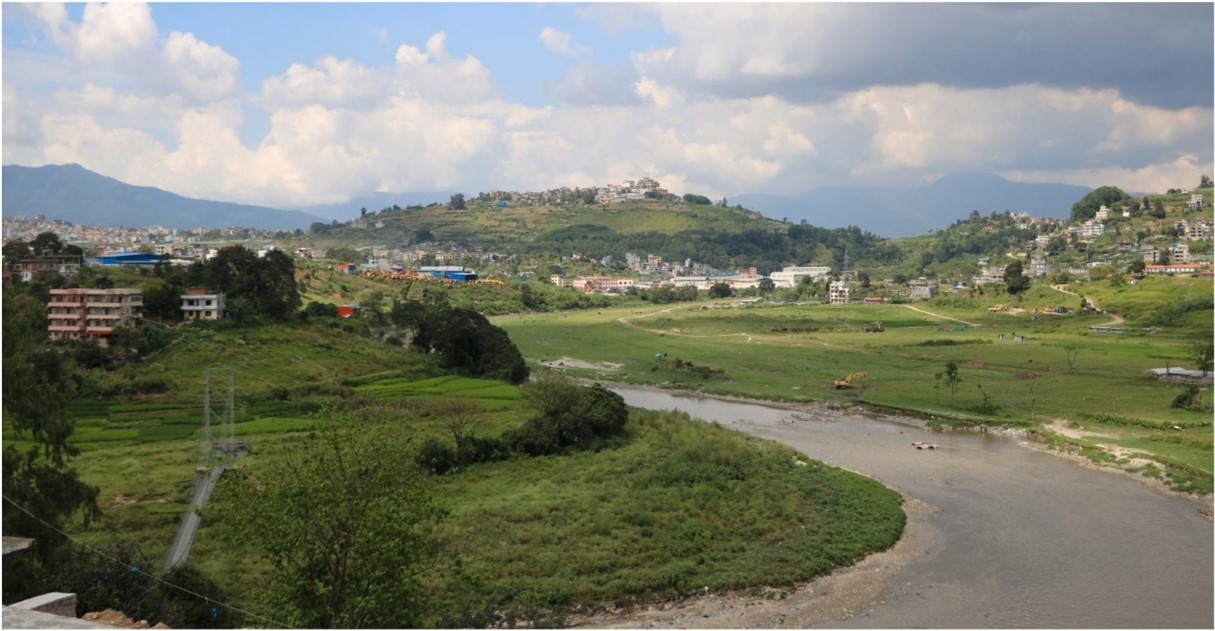
In a paper recently published by the International Journal of Disaster Risk Reduction, Tomorrow’s Cities researchers analysed the repercussions of unregulated urban growth in Khokana, Nepal, demonstrating that it’s causing its residents to be increasingly more vulnerable to disasters. Disaggregating the impact that hazards have on different communities and social groups, the study emphasizes the urgent need for inclusive urban planning that considers the unique local context and prioritizes the most vulnerable communities.
A worrying trend unveiled
In August 2021, the trip of a Tomorrow’s Cities researchers team travelling to meet members of the Khokana Ward Disaster Management Committee, took an unexpected turn. While driving through the valley, their car got stuck in a muddy section of the road. Surprised by the conditions of the route, they inquired local residents about the frequency of such occurrences. What they discovered was not just a one-time inconvenience, but a recurring and troubling trend that had plagued the region for the better part of a decade. Subsequent visits during the monsoon season unveiled a stark reality – landslides triggered by the swelling the royal canal, inundation in temporary settlements where migrant laborers predominantly reside, and a series of floods and landslides along the Bagmati River, which borders Khokana.
These accounts and the researchers' experiences come together to highlight a significant and concerning narrative on how the physical changes Khokana and its nearby areas are going through, are producing an increasing disaster risk. What's particularly troubling is the evident disparity in vulnerability among different communities, emphasizing the urgent need to address these inequalities.

Location of the proposed end of the fast-track road and new bus park (“zero point”), on the banks of the Bagmati River. November 2022.
Neoliberalism, socio-spatial changes, and cultural shifts as risk drivers.
Prompted by the concern that Khokana is on a fast track to increasing disaster risk, the group of Tomorrow’s Cities researchers led by Dilli Prasad Poudel from the Southasia Institute of Advanced Studies, Nepal, delved into the reasons why hazard exposure and vulnerability are on the rise in the region, examining what's driving the unequal distribution of these risks amongst different communities. The research zooms-in on the roles of politics and economics to show how neoliberalism, socio-spatial changes, and cultural shifts are shaping this evolving risk landscape.
“In our research, Khokana emerges as a poignant case study illustrating the impact of rapid urbanization on peri-urban areas. We observe a surge in unplanned construction activities, exemplified by the emergence of temporary settlements locally called 'tahara basti', which amplify inherent disaster risks.”
- Dilli P. Poudel, Southasia Institute of Advanced Studies, Nepal.
Their work it's not just an academic exercise though, and the research makes it clear that not everyone is similarly vulnerable. Like in many other parts of the world its migrant laborers who are hit harder when extreme events occur. These inequalities become a physical part of the landscape, perpetuating cycles of poverty.

Dilli P. Poudel and team working in Khokana, Nepal.
“Khokana became a focal point for development, with several major multi-billion rupees urban projects that trigger processes like land fragmentation, speculation, and the influx of migrants, primarily comprising laborers and low-income communities, for whom there’s no formal housing response. As a result, the urbanization takes on a haphazard nature, perpetuating the production and reproduction of risks within the region.”
Dilli P. Poudel, Southasia Institute of Advanced Studies, Nepal.
Following the Tomorrow’s Cities Decision Support Environment framework, Dilli and his team conducted in-depth interviews, group discussions, and community-led workshops to gather diverse perspectives on hazard risks and urbanization and map the region’s hazards. They also observed firsthand the physical changes, social issues and hazard context of Khokana.
“Looking ahead, our research advocates for a new approach to urban planning. We need a strategy that prioritizes the well-being of the poor, takes into account the sensitivity to risks, and is both intentional – making risk reduction an integral part of urban planning – and inclusive, ensuring that all voices are heard in the process.”- Dilli P. Poudel, Southasia Institute of Advanced Studies, Nepal.